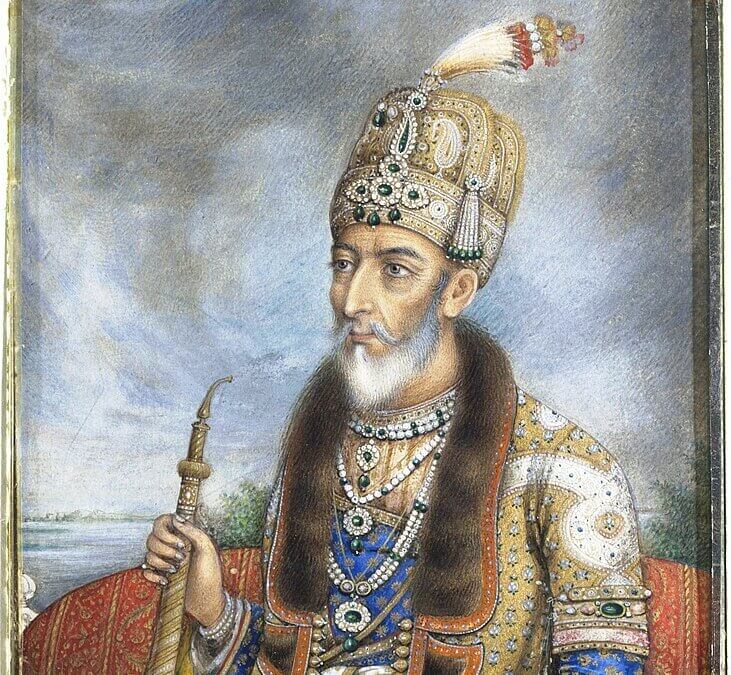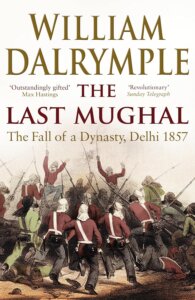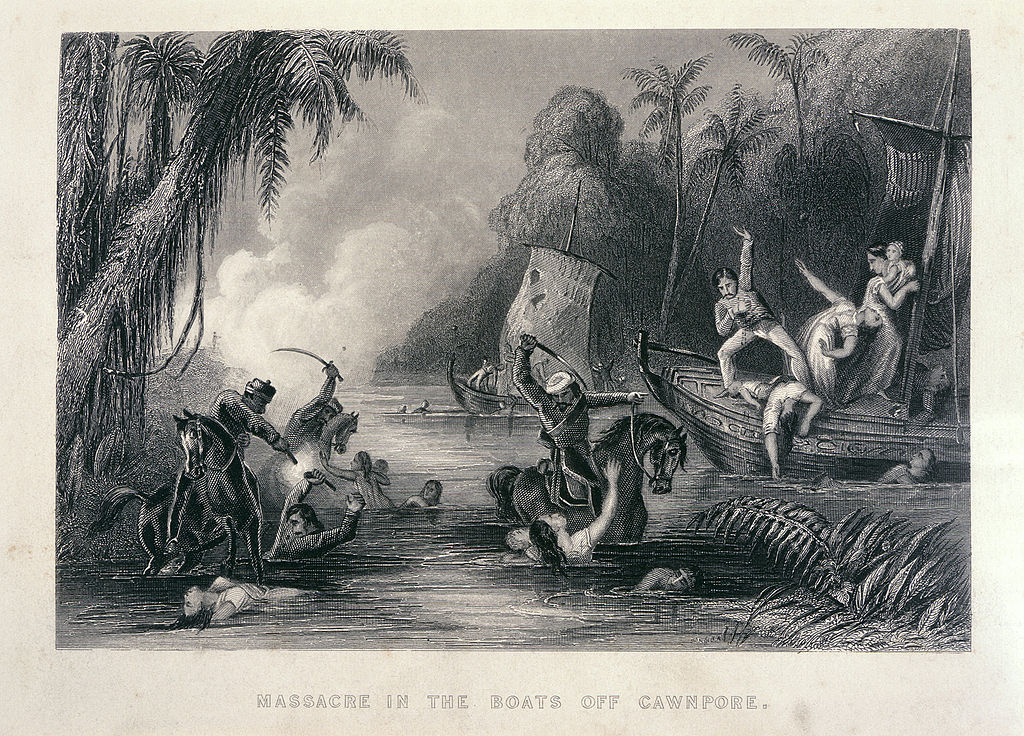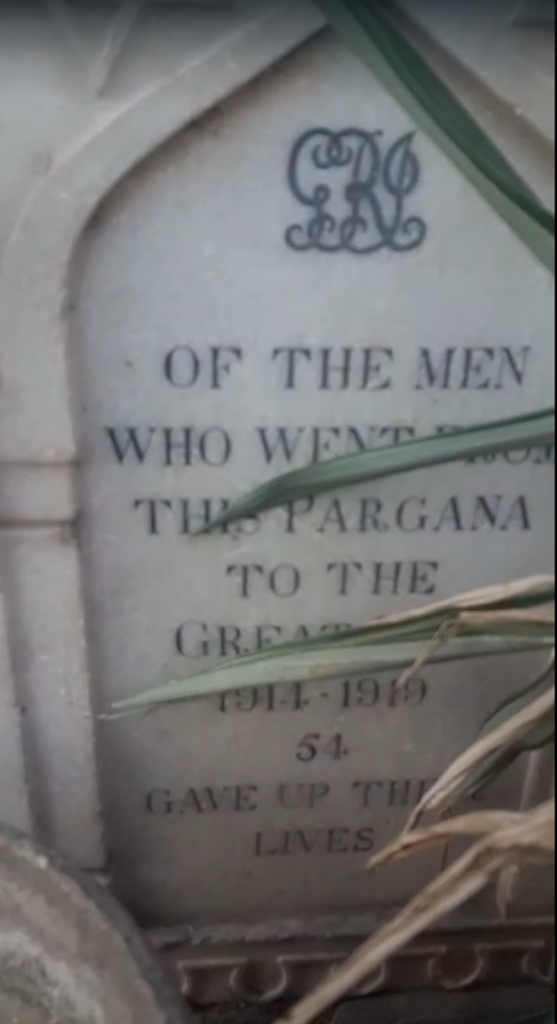
The Last Mughal
If you read last week’s blog post about Delhi’s Red Fort, you will have seen a reference to William Dalrymple’s book The Last Mughal. I started reading this before we went to India, read some more while we were there, and then came home and finished it. From which you can rightly conclude that it’s not a short book but it’s well worth the effort.
The Last Mughal describes life in one of the great courts of the world. As its secular power waned, so the Mughal court became a focus for high culture: a world dominated by artists and poets. Dalrymple brings that court to life and gives us some idea what we lost with its total destruction.

Inside the Red Fort today
The book keeps a tight focus on events in Delhi in the run up to the 1857 rebellion and its aftermath. Dalrymple makes a point of not discussing the wider conflict with the battles at Cawnpore/Kanpur and Lucknow. However, his summaries of the politics of the events and his analysis of the causes of the conflict and the way it played out are clear and concise and much better informed than those of many other people who write on this subject. Having produced a novel set in 1857 India (Cawnpore) and then written various bits and bobs about the war, I’m amazed at how misunderstood events are.
Dalrymple’s writing is informed by his own research in the Indian National Archives and elsewhere, working his way through a mass of documentation:
… great unwieldy mountains of chits, pleas, orders, petitions, complaints, receipts, rules of attendance and lists of casualties, predictions of victory and promises of loyalty, notes from spies of dubious reliability and letters from eloping lovers …
It is often said that the war of 1857 is particularly well documented. The British loved paperwork and have their own records of orders and memos. Civilians and soldiers wrote letters home that have survived to this day and after the fighting was over there were inquiries and trials and all this material is easily available to historians. Almost all the records that have been used by British historians, though, derive from British sources. Dalrymple’s book is unusual in that much of it is based on Indian material. It means that The Last Mughal provides an excitingly different view of what happened. Anyone who is seriously interested in the conflict would be wise to read it.

I’m not going to attempt to summarise the contents. It’s far too long to reduce to a few paragraphs in a review and too well-written to need a crib sheet. There are parts that I felt could be usefully shortened, but I suspect everybody will have different opinions has to which bits could go. There was a lot of detail about minor characters on both sides: minor princes and their mistresses; British junior officers and their wives. It was easy to get lost, especially given the close family relationships that meant a lot of overlapping names on both sides of the conflict. There’s an introductory list of the main characters with a quick paragraph about each one, but it could usefully be extended to include a lot more names.
There is also a lot of detail irrelevant to the main themes of the book. The account of “one very stout old lady” fleeing the rebels stuck in my mind. Trapped in Delhi, the only escape for one group was to jump from the walls. Faced with a 25 foot drop, the woman screamed and refused to jump. As they came under fire, “somebody gave her a push and she tumbled headlong in the ditch beneath”. She survived the fall and the story of her escape (told in a letter home from one of the men in the party) gives a vivid picture of the reality of the early days of the Mutiny, with Europeans fleeing for their lives. The stout old lady’s escape may not add anything to our understanding of the politics of revolt but it is the sort of detail that brings history alive. In some ways, the book would be improved by removing extraneous anecdotes, but in other ways it would be very much the poorer.

Dalrymple’s extensive use of contemporary accounts, quoted at length, leads to a problem that many historians face: that of whether, and how much, to systematise spelling. Places are referred to by both their European and native names and, in some cases, the native spelling varies from writer to writer. This can create confusion. There is a glossary, which can help but it’s at the back of the book and I didn’t realise it existed until rather late in the day. It’s also not immediately obvious, in a book with hundreds of unfamiliar terms, which of them might be found in the glossary. Had I known it was there, a great deal of flicking backwards and forwards would have been involved. A more systematic use of italicisation or emboldening to indicate when definitions were available might have been useful.
These are quibbles, though, and whichever approach Dalrymple had taken, I am sure he would have annoyed somebody. The book is an astonishing glimpse into a lost world as well as a brilliant account of the historical details of the end of the insurrection and the way that the British handled the aftermath.
It is in the account of the fall of Delhi and the atrocities that followed that the book has, I think, resonances for today.
There is no doubt that the Mutiny (in the early days it was, first and foremost an uprising of troops in British service) was attended by graphic acts of horrific violence, much of it directed against civilians and with terrible casualties amongst women and children. As the British organised a belatedly effective response to an outbreak that had taken them by surprise, the idea that they were fighting a legitimate war of vengeance became common. Many officers expressed the view that it was appropriate, and maybe even necessary, to kill every last one of the Indians who had risen against them and maybe anyone who might have sympathised with the uprising. Here is Lieutenant Charles Griffiths writing after the war was over:
“… Christian men and gallant soldiers, maddened by the foul murder of those nearest and dearest to them, steeled their hearts to pity and swore vengeance against the mutineers… The same feelings to some extent pervaded the breasts of all those who were engaged in the suppression of the Mutiny. Every soldier in our ranks knew that the day of reckoning had come for the atrocities which had been committed, and with unrelenting spirit dedicated himself to the accomplishment of that purpose … it was a war of extermination, in which no prisoners were taken and no mercy shown … Dead bodies lay thick in the streets and open spaces, and numbers were killed in their houses … many non-combatants lost their lives, our men, mad and excited, making no distinction.”
Dalrymple provides many details of the atrocities committed. They’re not an easy read: even the British authorities eventually agreed that things had gone too far.
It’s important to remember that some of the British involved in these atrocities had lived and worked alongside Indians for years. Some had Indian relatives by marriage. Yet they killed without mercy, with significant public support. The Delhi Gazette reported:
“Hanging is, I am happy to say, the order of the day here… Six or eight rebels are hanged every morning.”
It seems that, faced with terrible atrocities, people can turn on their enemies and exact a vengeance that goes beyond anything that was done to them and which later generations will be appalled by. We don’t have to look too hard to see similar behaviours today.
Another aspect of the British response to the uprising which echoes down to today was the way that the blame for everything was pinned on the Muslims. A show trial of the Emperor concluded that he had headed a Muslim conspiracy with “a Mahommedan clandestine embassy to the Mahommedan powers of Persia and Turkey.” It was, according to the prosecution, “a religious war for Mahommedan ascendancy.” The fact that the Mutiny had started among Hindu soldiers and had been supported by wide swathes of the local population was simply ignored. “Hinduism,” claimed the prosecution, “… is nowhere either reflected or represented.” Even more than a century and a half later, the British authorities will never allow the facts to get in the way of an anti-Muslim rant.
In summary, Dalrymple’s remarkable scholarship has produced a wonderful book casting new light on the events of 1857 and providing food for thought for those analysing some of the conflicts of the modern day. It’s a must-read for anyone interested in Indian history and has much to offer everybody.











